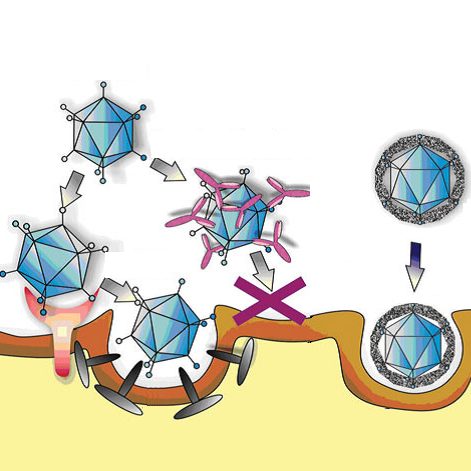Nanoscale viruses have the potential to act as ideal templates for functional modification using chemical or material methods.
Researchers from Zhejiang University and State Key Laboratory of Pathogen and Biosecurity of China have developed a novel technique, known as Biomineralization-Based Virus Shell Engineering (BVSE), for coating viruses with inorganic materials. Using human adenovirus type 5 (Ad5) as a model, this BVSE technology can readily cover each single virus particle with a calcium phosphate shell. These engineered viruses are then able to masquerade as inorganic calcium phosphate nanoparticles; they exhibit physical, chemical, and biological characteristics that are distinct from the precursor virus. This altered character, allows the particles to enter a variety of cells via a receptor-independent mechanism.
Once inside the cell, the infectious viruses can be released spontaneously. In vivo intravascular administration of the modified Ad5 particles demonstrates enhanced infectivity and an expansion in the viral tropism. Importantly, the particles are able to circumvent neutralizing antibodies, allowing systemic administration of Ad5 even under pre-immunized conditions. This BVSE technology can be adapted to any other kinds of viruses in nanoscale, providing a powerful platform for virus functional modification. This technology pathes the way for further applications in medicine and life science, notably in cancer virotherapy and the development of vaccines.
The research was recently published in the new journal Advanced Healthcare Materials.

















